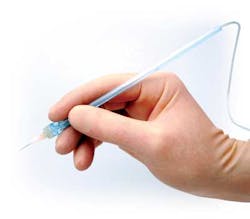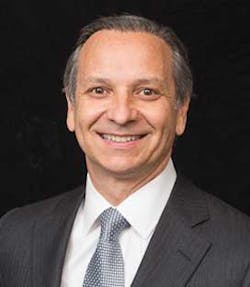Injections reinvented: Improving the 150-year-old hypodermic syringe for dentistry
As a practicing periodontist and orthodontist, it pains me to know that millions of people dread dental visits or even avoid going. It’s no secret that many patients are afraid of discomfort and pain.
Some of my colleagues and I have been at work on what we believe could be a helpful solution. We have tried to reimagine the hypodermic syringe, which took its current shape in 1876 and hasn’t changed significantly since then. While the hollow needle is an efficient way to get medications into the body, it’s an imprecise — and sometimes even risky — tool.
We have a company called Milestone Scientific, and we believe our technology has the potential to change the way medical professionals deliver injections. We have designed the handpiece so that it is held like a pen, and connected it to a pressure sensor and a microprocessor. The system is called DPS®, short for Dynamic Pressure Sensing, and it gives the practitioner real-time feedback, generally in the form of a gentle pinging sound, as the injection is made. The audio signal tells the clinician how much resistance the needle encounters — a precise indicator of its location — as it enters muscle, ligament, or other tissue. From that, he or she can tell when the needle has reached its desired target.
We believe we can make an injection all but painless. As any dentist knows, it is not the pinprick of the needle that actually hurts – it’s the pressure the patient feels as fluid is administered through the needle into tissue. The DPS system controls the pressure, keeping it well below any patient’s pain threshold. A simple topical anesthetic can take care of that initial pinprick. Many patients report that because of Milestone’s system, they never felt the shot at all.
RELATED |A dentist’s discovery of anesthesia shaped the future of medicine
There are many practical applications for this system. For instance, if a filling is required, a dentist can numb just a single tooth instead of several teeth and surrounding tissues. If a patient requires palatal anesthesia for a periodontal procedure, this technology makes it virtually painless and much less stressful for the operator and the patient. And DPS should help the orthodontist placing temporary anchorage devices (TADs). There should be no more need to rely on topical instead of more effective local anesthesia for fear of having to give an injection. Now there is an easy, virtually painless solution. A more precise, more effective, and more comfortable injection translates into better dentistry for patients and for dentists.
You may think an additional piece of equipment would add to the nation’s medical bills, but we believe widespread use of this system could instead reduce the cost of many procedures. The system’s precision injections mean that an anesthetic can take effect more quickly — in one to two minutes instead of eight to 10 — so dentists, orthodontists, and their staff should be able to see more patients in the same amount of time. Even insurance companies should be happy, since smaller, more precise injections mean a reduced chance of medical mistakes and associated malpractice claims.
We do not have all the answers. Patients who have a phobic reaction to needles will be disappointed to know that there is still a needle. The other tools of our profession remain unchanged.
But having worked on our system for some years now, I feel strongly about it. We believe about 4% of our colleagues now use our system, and many of them say they will never go back to the old technology. I believe it improves patient care, enhancing safety and boosting efficiency. After working with DPS, I can say that seeing is believing. Or in this case — feeling is believing.







